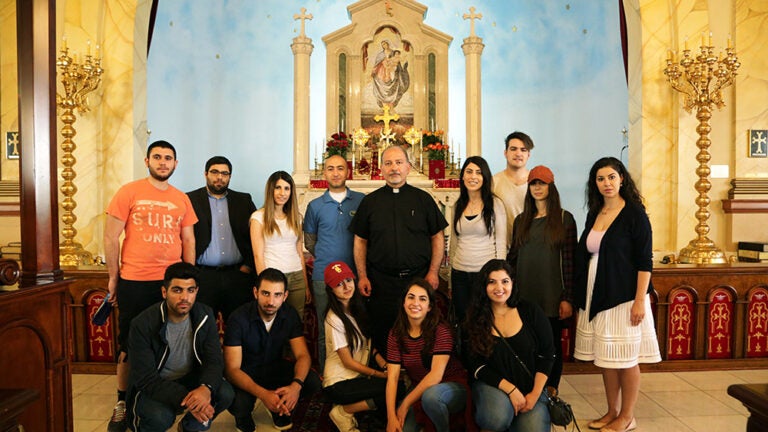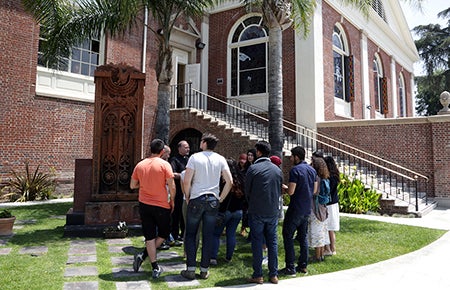
Summer course explores history of the Armenian diaspora in Los Angeles
Richard Antaramian has a goal: empower students with knowledge to make them more effective citizens. He’s making headway through a Maymester course on the “Armenian-American Diaspora in Southern California.”
Antaramian, Turpanjian Early Career Chair in Contemporary Armenian Studies and professor of history, teaches the course to help both students with Armenian roots and those without better understand the deep history of Armenians living in Southern California.
“For students with no Armenian background,” he said, “it’s a chance to learn about a large portion of Los Angeles’s history and go beyond the romanticized view of immigration we’re taught in school.
“My hope is that through this course students who want to serve the community will get a nuanced understanding of how to create better institutions to help Armenian Americans or any immigrant communities.”
From mid-May to mid-June, weekly full-day field trips allowed students to explore Armenian churches, markets, schools, social services agencies and other institutions in L.A.-area Armenian hubs such as West Hollywood, Pasadena and Glendale. Each excursion provided an authentic view of the diversity within the expansive Armenian community.
Zaven Charkchyan, a junior studying business administration at the USC Marshall School of Business and student worker at USC Dornsife’s Institute of Armenia Studies, was born in the United States, but both of his parents are from Yerevan, Armenia.
“My mom’s side is originally from Greece and my dad’s family is from Georgia,” Charkchyan said. “I took this class because I wanted exposure to Armenian institutions that I wasn’t exposed to growing up.”
Most Armenian Americans living in the L.A. vicinity came during what is known as the second-wave of immigration, which began in the 1960s. The Lebanese Civil War that started in 1975 and the Iranian Revolution of 1979 greatly contributed to the influx of Middle Eastern Armenians, many of whom settled in California.

Students gather at the Armenian Relief Society in Glendale.
“Unlike most other immigrant communities, those that live in diaspora are more used to establishing communities in foreign countries — and their central institutions are vital to the people they serve,” Antaramian said.
Ani Abrahamyan, a junior studying industrial psychology, moved to L.A. from Armenia when she was 14.
“I learned so much in this class,” Abrahamyan said. “Previously, I’d had no idea about Armenian political parties in the U.S., so it was very interesting to learn about Armenian politics here.”
She also mentioned that most of her friends in L.A. are from the country of Armenia — as opposed to Middle Eastern countries — so it was very interesting to discuss history with students who speak the same language but come from other countries.
“I feel a strong connection to so many of them,” she said.
Jordan Pedersen, biological sciences major graduating at the end of the summer, is the only non-Armenian in the class. And although conversation does occasionally switch to Armenian, he said he never feels left out.
“I didn’t know any Armenians before coming to California and USC,” said Pedersen who hopes to become a physician. “I love the culture and people. The Armenians I know have so much passion.”
In fact, after visiting Armenian social institutions through this course, Pedersen said he would like one day to practice medicine in Armenia.
“Sometimes these passions make their way into your heart, and it’s hard to explain exactly how,” he said. “I think it comes from the love so many Armenian people here have shown to me. Now I want to go there and give back.”